MIHO's Healthy Smile Life
from webWD
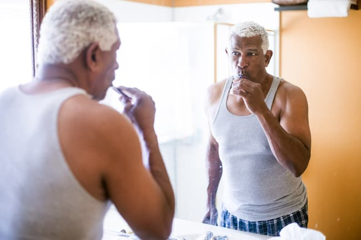
あなたの歯磨きは間違っていますよ
Toothbrushing Mistakes You’re Making Now
https://www.webmd.com/oral-health/ss/slideshow-toothbrushing-mistakes
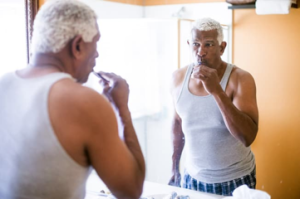
Question Your Routine
You’ve brushed your teeth the same way for so long, it’s second nature. But are you doing it at the right time? For the right amount of time? The right way? With the right amount of toothpaste? More than 1 in 4 adults in the U.S. have untreated tooth decay, and half of everyone over 30 have signs of gum disease. Time to get a handle on mistakes that affect your mouth.
url
ご自分の習慣を疑問視してみましょう
あなたは長い間同じやり方で歯を磨いてきました。それは第二の天性です。 しかし、果たして歯みがきを適切な時期にやっているのでしょうか? 十分な時間磨いていますか? 正しい方法で? 歯磨き粉の量は適切ですか? 米国の成人の4人に1人以上が未治療の虫歯を患っており、30歳以上の全人口の半数が歯周病の兆候を示しています。今こそ、あなたの口に悪影響を与える間違いに対処する時です。

Not Brushing Long Enough
Get out the stopwatch: Your brush time may be shorter than you think. The American Dental Association recommends that you brush a minimum of 2 minutes each time to remove a decent amount of plaque. If you have devices in your mouth, like braces, a bridge, or implants, add extra time to gently clean around areas where food gets trapped.
url
十分な時間歯をみがいていない
ストップウォッチで測ってみましょう:あなたの歯みがきの時間は思ったより短いかもしれません。 アメリカ歯科医師会は、十分な量の歯垢を取り除くために、毎回最低でも2分間歯みがきをすることを推奨しています。 歯列矯正器具、ブリッジ、インプラントなどが口の中にある場合は、食べ物が挟まりやすいので、その周囲をやさしく掃除するために歯みがきの時間を追加しましょう。
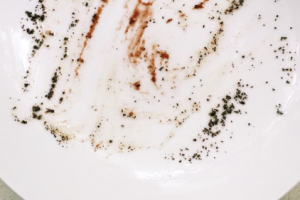
Not Brushing Often Enough
Once in the morning doesn’t cut it: It’s important to brush your teeth twice a day to remove bacteria and plaque. Think of your teeth like a plate. After you eat, your plate won’t be clean if you just rinse it off. It takes scrubbing with dish soap and a sponge. The surfaces of your teeth attract food, and only a toothbrush and toothpaste will get into the nooks and crannies.
url
多くの場合十分なブラッシングはできません
朝に一度みがくだけでは不十分です:バクテリアと歯垢を取り除くために1日2回歯をみがくことが重要です。 歯をお皿だと考えてください。 食後にお皿を洗い流すだけではきれいになりません。 食器用洗剤とスポンジでこすります。 食物は、歯の表面に引き寄せられて付きます。歯ブラシと歯みがき粉だけが隙間に入りこめるのです。
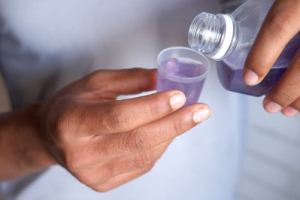
Brushing at the Wrong Time
For the first 20 to 30 minutes after you eat, your mouth becomes slightly acidic and your tooth enamel weakens a bit.
If you brush right after you eat, you run the risk of wearing down your enamel too fast. Less enamel means it’s easier for bacteria to settle in and cause more cavities and infection. Wait at least 30 minutes after you eat to brush, or if you’re in a hurry, rinse with water or use mouthwash to neutralize the acid.
url
誤った時間に歯みがきをする
食後20〜30分間は、口の中はわずかに酸性に傾いており、歯のエナメル質が少し弱くなります。 食後すぐに歯みがきをすると、エナメル質が早く摩耗されるリスクがあります。 エナメル質が薄いということは、バクテリアが定着しやすく、虫歯や感染症を引き起こしやすいことを意味します。 食後は、少なくとも30分待って歯みがきをしましょう。急いでいる場合は、水ですすぐか、うがい薬を使って酸を中和させます。

Not Brushing the Right Way
Place your toothbrush on your teeth, then tilt it up a bit so it’s at a 45-degree angle to your gums. Then move the brush head from tooth to tooth, using a small circular motion. This goes for the outer surfaces of your teeth, the inner surfaces and the tops or chewing surfaces as well. For better access, try using your left hand to brush the right side of your mouth and your right hand to brush the left side.
url
正しい方法で歯みがきをしていない
歯ブラシを歯の上に置き、歯茎に対して45度の角度になるように少し上に傾けます。 次に、小さな円を描くようにブラシヘッドを歯から歯へと動かします。歯の外面、内面、上部または咀嚼面に同様に行いましょう。 左手を使って口の右側の歯をみがき、右手を使って左側の歯をみがくとやりやすいでしょう。
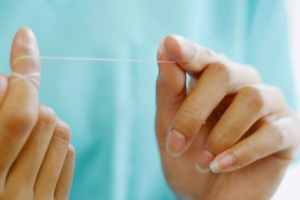
Forgetting to Floss
No matter how perfectly you brush, if you don’t floss, you miss half the surfaces of your teeth — and plenty of plaque that can cause cavities and gum disease. Plaque is a sticky film full of bacteria that feeds on the leftover food in your mouth. It gives off an acid that eats away at your teeth and can harden into tartar that only a dentist can scrape away.
url
デンタルフロスを忘れる
どんなに完璧にブラッシングしても、デンタルフロスを使用しないと、歯の表面の半分を見落としており、そこには虫歯や歯周病を引き起こす可能性のあるプラークは沢山残っています。 プラークとは、口の中に残った食べ物を食べるバクテリアがたくさんいる粘着性のあるフィルム状の細菌叢です。 それは歯を食いつくす酸を放出し、いずれ歯石として固まります。歯石は歯科医院でしか落とすことができません。

Not Brushing Your Tongue
Your tongue is the floor of your mouth. It helps you speak and swallow, and it also traps bacteria that leads to bad breath and tooth and gum decay. Use your toothbrush to clean from back to front a few times after you brush, but take it easy: Your tongue is covered in papillae, or tiny bumps that help you sense taste and texture.
url
舌をみがかないの?
舌は口の床です。 舌はあなたが話したり飲み込んだりするのを手助けし、また口臭や歯と歯茎の腐敗を引き起こすバクテリアを捕らえます。 歯みがき後、歯ブラシを使って後ろから前に数回掃除しますが、ゆっくりやさしく行いましょう。舌は乳頭、または味と質感を感じるのに役立つ小さな隆起で覆われています。
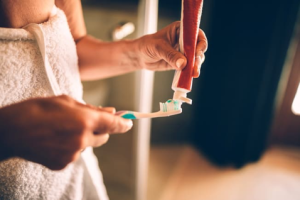
Using Too Much Toothpaste
In commercials and print ads, toothpaste always covers the bristles of the brush, from beginning to end. But adults only need a pea-sized amount, or half the length of a standard toothbrush. The fluoride in toothpaste is a mineral, and too much of it can change the shape and structure of your teeth.
url
歯磨き粉を使いすぎる
コマーシャルや印刷広告では、歯磨き粉はブラシの毛の端から端まで覆っています。 しかし、大人が必要とするのは、豆の大きさ、つまり標準的な歯ブラシの半分の長さぐらいの量です。 練り歯磨きに含まれるフッ化物はミネラルであり、多すぎると歯の形や構造を変化させる可能性があります。
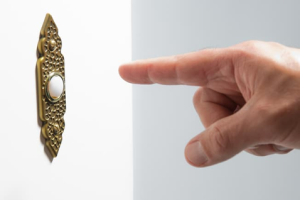
Brushing Too Hard
Whether you use a manual or powered toothbrush, the most effective way to clean your teeth is by repetition, not force. Just exert the same amount of pressure you’d use to ring a doorbell. Too much pressure wears down your enamel and causes recession, or shrinkage in the tissue that connects your gums to your mouth.
url
ブラッシングが強すぎる
手動または電動の歯ブラシを使用するかどうかにかかわらず、歯をきれいにする最も効果的な方法は、力ではなく繰り返して行う歯みがきです。 ドアベルを鳴らすのに使用するのと同じ量の圧力をかけるだけです。 圧力がかかりすぎると、エナメル質がすり減り、歯茎と口をつなぐ組織が収縮したりします。
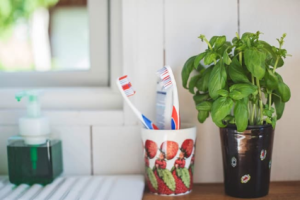
Storing Your Brush the Wrong Way
To keep your toothbrush as clean as possible, rinse it to make sure all the toothpaste and debris are out of the bristles and store it upright where it can air dry. If you store it near other toothbrushes, make sure they don’t touch. Don’t cover it, or store it in a container, because bacteria love to grow in moist environments.
url
間違った方法で歯ブラシを保管していませんか?
歯ブラシをできるだけきれいに保つためには、よくすすいで、歯みがき粉や破片を毛に残さないようにすること、そして自然乾燥できる場所に直立させて保管してください。 他の歯ブラシの近くに保管する場合は、お互いが触れ合わないように注意してください。 バクテリアは湿った環境で増殖するのが大好きなので、歯ブラシを覆ったり、容器に保管したりしないでください。
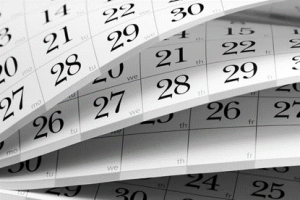
Keeping Your Toothbrush Too Long
The lifespan of a toothbrush is about 3 to 4 months. After that, the bristles become frayed and don’t clean your teeth as well.
url
歯ブラシを替えない
歯ブラシの寿命は約3〜4ヶ月です。 その後は、毛がほつれてくるので歯はきれいになりません。

Only Brushing Part of Your Teeth
You’re probably most motivated to clean the front of your teeth because it’s the easiest to access and the part other people see. But the tops and backs of your teeth — the part that faces inside your mouth — are just as vulnerable to the 500-700 species of bacteria that live in your mouth.
url
歯の一部だけをブラッシングする
手が届きやすく、他の人によく見られるため、おそらく皆さんは歯の前の見える部分ををきれいにすることはしますね。 しかし、歯の上部と後ろ(口の内側に面している部分にも、口の中に生息する500〜700種のバクテリアが存在します。

